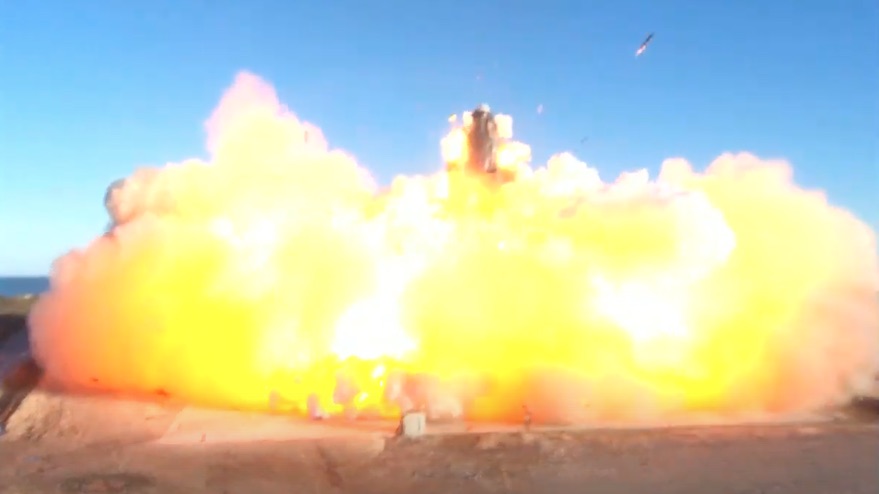Products You May Like
There was no clearer set of contrasts between how SpaceX and NASA approach launch vehicle development than the dueling tests the two performed in early December of Starship and Space Launch System, respectively.
It was hard to miss the Dec. 9 test flight of SpaceX’s Starship SN8 prototype, the first time the vehicle flew more than a couple hundred meters off the pad. It soared into the Texas sky propelled by its three Raptor engines, then descended back to the pad — only to explode after coming in a little too fast. The flight won praise from its fans, but that explosive end prompted a backlash from critics.
Two days earlier, NASA started a test of the SLS core stage at the Stennis Space Center. There would be no launch that day, or even an ignition of the stage’s four RS-25 engines, just loading the tanks of the giant stage with liquid hydrogen and liquid oxygen. But even that modest step did not go as planned: engineers stopped the test when the liquid oxygen flowing into the tank was a few degrees warmer than expected.
The two events clearly illustrate the differences in development philosophies between the two organizations. SpaceX’s approach is the literal manifestation of the Silicon Valley philosophy to “move fast and break things,” in this case Starship prototypes. The SN8 prototype that met its demise was the latest in a long line of test articles, and hardly the first to have exploded, burst or crumpled.
NASA’s approach to testing SLS has been far more cautious. While SN8 was simply a prototype never intended to fly to space, the core stage at Stennis is flight hardware that NASA will use for the Artemis 1 mission in late 2021. In a call with reporters, NASA managers emphasized they were being deliberate and cautious during the ongoing Green Run test campaign, not wanting to take any risks with the hardware.
It’s tempting to look at that slow pace and ask, “Why can’t NASA be more like SpaceX?” That’s certainly what many fans of SpaceX have wondered, looking at the relatively rapid development of Starship and comparing it to the snail’s pace of SLS. In their view, the SpaceX approach is clearly better than how NASA is developing SLS.
But it’s hard to see NASA adopting a Starshiplike approach to SLS development. The tolerance for risk is very different for a government program like SLS, with a budget of more than $2 billion a year and a large number of stakeholders in government and industry, than for a private program that answers ultimately to just one person, Elon Musk. SLS stages exploding on test stands would invite not just bad press but also congressional scrutiny.
Yet the two efforts are not nearly as different as they might appear. While NASA is being very careful with the core stage on the stand at Stennis, the agency tested other SLS hardware to destruction to confirm its structural strength matched models. (One NASA release about such a test emphasized a propellant tank was burst “on purpose,” possibly to preempt any criticism about the test being a failure.)
SpaceX, meanwhile, is not as reckless as all the dramatic explosions during testing would lead some to assume. People who closely track all the activities at Boca Chica have documented many test attempts, like static firings of Starship prototypes, that were scrubbed for one reason or another. It’s a sign of measured risk taking by SpaceX even as the Starship effort has fallen behind Musk’s aggressive schedule. At an event at Boca Chica last fall, he expected the first high-altitude test flight to take place in one or two months, but Starship SN8 finally flew 14 months later.
Expecting SLS development to move faster is probably just as unlikely as expecting that Starship development will have fewer explosions. Each is optimized for the risk tolerance of their organizations and those funding them. Whether either approach is optimized for long-term success, though, remains to be seen.

Jeff Foust writes about space policy, commercial space, and related topics for SpaceNews. His Foust Forward column appears in every issue of the magazine. This column ran in the Dec. 14, 2020 issue.
